CHORD ELECTRONICS 2GO Review – 2go a go go
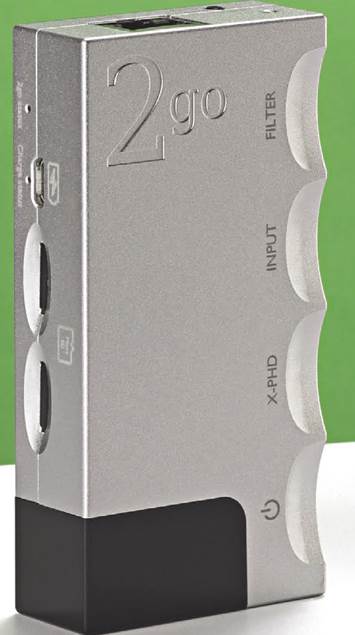
To accompany their Hugo 2 DAC, Chord Electronics launch the 2go streamer. Noel Keywood investigates. Read our CHORD ELECTRONICS 2GO Review.
You’ve bought a Hugo 2 high technology DAC from Chord Electronics, that feeds headphones or a hi-fi. But it needs a digital source. 2go is a new answer from Chord Electronics. It is a streamer for Hugo 2, one also able to play music from microSD card.
Table of Contents
2go turns Hugo into a digital audio player (DAP) of a sort, if not of the portable type we often cover in Hi-Fi World, from FiiO, Astell&Kern et al. Reason being it must have a wi-fi connection to work, where as portable DAPs are self-contained – something that confused me I must admit. 2go will not read the contents of a microSD card without wi-fi.
Because 2go has no screen it relies on control by a mobile phone or tablet. In conjunction with Hugo 2 it is a transportable player for around the home, where it links to phone or tablet through the domestic router. Carry 2go around with Hugo 2 to get music anywhere in the house, over headphones or through the hi-fi.
Why bother to do this when a smaller, cheaper DAP will do? Basically, because 2go neatly links into a Chord Electronics DAC, one that technically out-performs most others (see Measured Performance). It also has a different sound, as I’ll explain later.
2go bolts onto Hugo 2 to form a large, solid and heavy (532gm) unit. It won’t fit a shirt pocket like my tiny Astell&Kern AK-120, and I could only just squeeze it into the large leg pocket of my cargo trousers. 2go plus Hugo 2 are tank-like in both dimensions and build quality, but have physical presence like no other.
One reason is a prodigious on-board battery power supply with supercapacitors to handle demand peaks.
Chord Electronics warn that ordinary chargers may not do and that’s what I found by casually connecting up a weedy 5V USB charger: Hugo’s white power LED flashed regularly to warn me this was insufficient. Connecting up their supplied 5V/ 2.IA charger stopped

the flashing and charged the combo in around the 6 hours quoted. The supplied charger carries no identification so it will get lost in the myriads that lie on the floor. A sticker that identifies it would help. The charger can be left connected for mains power.
2go comes as a machined alloy casting, fixing pegs attaching it to Hugo 2. Screw the pegs into the case of Hugo 2, slide 2go onto them and
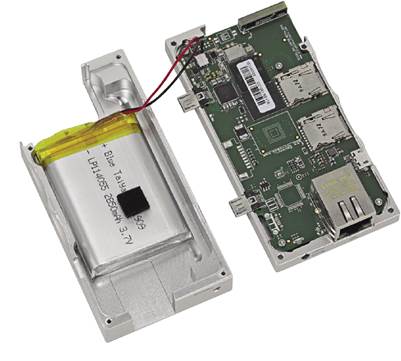
The internal battery has a high capacity of 2850mAh. Card slots at right and ethernet socket below.
use a supplied hex key to lock on. Connection between the two is made by microUSB connectors. Hugo 2’s input must be set to see 2go by selecting USB (white light).
2go weighs 155gm and measures 100mm high, 59mm wide and 21 mm deep, the combined assembly measuring 100mm high, 181 mm wide and 21mm deep. 2go carries a Bluetooth input that works in conjunction with wi-fi (or ethernet) and here is where life gets a little complicated I found.
Chord Electronics say the free- to-download app. Gofigure is used to set up 2go, then any other Control app. able to address “UPnP/DLNA servers etc” is afterwards used to run it. Hmmm… So that’s two apps., their often awkward user interfaces, techno lingo and dubious fundamental abilities to cope with.
Gofigure I quite liked, which was a problem. It recognised 2go in easily understood fashion and I got to play radio streams immediately – a promising start. When I elected to play from microSD card however – an available option – it could not
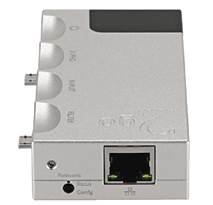
An ethernet socket for hard wired network connection and green LEDs to signal successful connection.
read contents of the card I had inserted and asked for a Playlist. Chord Electronics FAQs told me SD cards are addressed by MPD so I assumed a Playlist understood by MPD was needed – but we need not go there. Just look up MPD on the ‘net to find out why. I did in fact get the MPD daemon working on my Mac (Mojave) using command line control (it was like going back to 1983 and my Victor ACT Sirius) but this was a rabbit hole – and Alice wasn’t there to help.
I found 2go does indeed scan a card when inserted and load an MPD database text file onto the card from 2go, but it is unable to derive a playable list of content. What is needed, Chord Electronics told me, is an m3u format playlist. So I produced one of these in iTunes and loaded it but whilst the list header was seen there were no tracks to select.
Chord Electronics then explained that Bluetooth cannot handle large playlists because of its low BLE data rate. Geddit? What I was trying to do was not feasible. So, to conclude, Gofigure cannot be used as a player; it was not designed for that purpose,
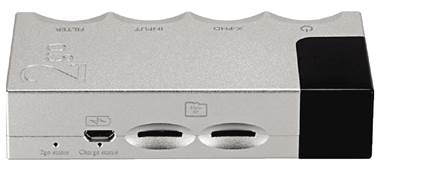
2go has two microSD card slots of 2TB read ability each. At left is its microUSB charging socket.
in spite of having play controls and the apparent ability to address a card file. The contents of a microSD card can only be read via wi-fi and a Control app.
Moving on, I then used Mconnect and 8player apps to run 2go via wi-fi and the former was most stable and consistent. Mconnect did its job well, if tainted by a sombre user interface. So although 2go can in principle play music from a microSD card without wi-fi connection, like a typical portable DAP of the sort we commonly review, it’s purposed for use in the home when wi-fi (or ethernet) connected to a router that in turn is wi-fi connected to a phone (or tablet).
For further info see Chord Electronics explanatory e-mail to me in our box-out.
Spec. wise 2go has two microSD card slots, each one able to read a 2TB card, so you get 4TB in all – absolutely massive (4000 GB). This is for DSD files that can come in at hundreds of MBs, so at five per GB you get storage for 20,000 DSD songs. I like microSD cards because they can carry personally compiled dedicated libraries, like all heavy Rock faves, all Reggae faves and so on. Or Piano, to listen to great pianists like Ashkenazy or the sublime hand of Arkadi Volodos.
From the ’net you get Tidal, Qobuz and Internet radio playback – with Spotify and others in future.
2go is also Roon Ready
SOUND QUALITY
I connected 2go plus Hugo 2 to our Creek Evolution I00A amplifier using Chord Company Epic cables. It fed our Martin Logan ESL-X hybrid electrostatic loudspeakers through Chord Company (no link with Chord Electronics) Signature Reference cables. Music I use for review purposes and know well was sourced from microSD card rather than from files of indeterminate provenance over the ‘net.
As expected the sound of Hugo 2 set the stage sonically. This is a deeply detailed and fast sounding DAC, quite unlike ESS and AKM alternatives.
Hearing Hugo 2 again after all the ESS and AKM DACs I spend time with was an interesting sonic update to my brain, reminding me just how distinctive it is. Less spacious and fulsome than the aforementioned rivals, it’s more like listening to a sonic sledgehammer. Nils Lofgren’s Keith Don’t Go (CD rip) had his acoustic guitar painted up solid and hard, almost cast in stone: think massive presence. There was also tremendous dynamic power to his frenzied crescendos. With a brighter hue than most DACs, strings cut out of the XStat electrostatic panels at alarming where synth kick drum had the kick of a mule, all but rocking my head backwards. You get a sense of enormous dynamic power from this DAC, but it isn’t romantic, more deeply revealing and rapaciously vivid. A ’take no prisoners’ sound for those of strong physiology or sturdy pacemaker.
With a range of high resolution tracks 2go with Hugo 2 delved further into Fleetwood Mac’s Go Your Own Way (24/96) than I am used to, magically reducing the confusion that often taints this track. In my head I’m always blaming its dated provenance – 1970s analogue studio recorders and all that whose heads didn’t easily coax high frequencies onto Ampex ferric oxide tape – but 2go with Hugo 2 suggested otherwise, giving a lovely clean punchy sound from what is a classic Rock track.
The ability to seemingly quell rubbish and noise, as well as lift out instruments and vocalists served to put Renee Fleming in front of me in sturdy form, singing Un bel di vedremo, from Madame Butterfly. Orchestral strings were clear and smooth, with no hint of digital shimmer. Yet there was scale to the performance and visceral push. With classical music I found the sonic qualities of 2go with Hugo 2 lit up performances, giving them vivacity if not warmth.
CONCLUSION
2go in itself was a complex user experience for me. I went down a couple of rabbit holes trying to sort out what was going on. But it worked easily enough in the end, using the Mconnect player. With Gofigure also needed to alter hardware setup, this is not an easy streamer / card player to understand and run. When working however what I heard from 2go and Hugo 2 was a great sound.
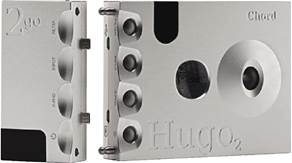
2go (left) plugs into Hugo 2 via two small USB connectors, and is held in place by two pillars (top and bottom).
speed, packed with fine detail. In fact it was all almost too much with the default White filter so I switched to the dullest Red filter but somehow wasn’t quite happy with losing edge, finally settling on the Orange filter that retained speed whilst reducing sharpness. Giving my eyeballs a rest!
The power of Hugo 2 came over with Safri Duo’s Samb Adagio
MEASURED PERFORMANCE
Frequency response with a 192kHz sample rate input reached 43kHz before rolling away to the theoretical upper frequency limit of 96kHz, with either orange or white (shown here) filters. With the red or green filters roll-off was earlier, giving better time-domain damping of impulses, if with slightly curtailed frequency response reaching 21kHz.
The roll off is sufficient to give a subtly ‘easier’ sound.
Fed 44.1kHz sample rate PCM (CD) frequency response ran flat to 21kHz with either orange or white filters or was very slightly softened by the red/green filters, by -1dB at 20kHz.
Dynamic range via both line and headphone outputs measured 124dB with the output level control set to avoid overload (4.7V) – a figure higher than most others in 2017 when we first measured Hugo 2, but now equalled by ESS, AKM and Crystal Semiconductor.
Distortion was negligible at 0.013% with a -60dB, 24bit digital input, as our analysis shows. There are no visible distortion harmonics, even in this high resolution analysis. With CD the figure was 0.2%, limited as always by 16bit quantisation noise.
Output from the headphone and Line outputs measured a very high 4.7V, dynamic range and distortion figures being identical.
The 2go + Hugo 2 combination produced excellent measured figures in all areas, exceeding most else. Top of the tree transportable streamer/DAC combo.
Frequency response (filter white)
4Hz- 43kHz
Distortion (24bit, -60dB) 0.013%
Separation 102dB
Dynamic range 124dB
Noise -122dB
Output (Line/H’phone) 4.7 / 4.7V
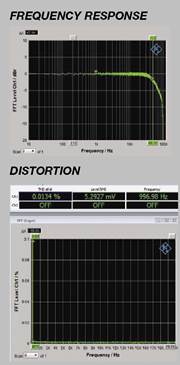
CHORD
ELECTRONICS 2GO
EXCELLENT – extremely capable
VERDICT
Chord Electronics
+44 (0)1622 721444
www.chordelectronics.com
CHORD ELECTRONICS SAY
“The Gofigure app was developed purely as a configuration app to help setup Poly and 2Go. In particular, it makes the job of connection to your WiFi network easier as you can scan and select the appropriate network.
It is not, however, a music player app and was never designed to be that. Chord always envisaged that its customers would use one of the many MPD/UPnP/DLNA apps/programs that are available (and that they might already be familiar with) to play music to 2go. You can, of course, also use Roon and 2go will be seen as an end point.
However, for convenience, Chord added a very simple playlist function that will look for m3u playlist files on the SD card and play them. It will not display the music contents on the SD card and you are not able to list tracks or albums – only playlists in m3u format will be shown. There is a reason for this: as 2go won’t necessarily be connected to a computer network then Gofigure has to use Bluetooth Low Energy (BLE) to make the connection between the app and 2go.
BLE is great for transferring the data needed for the settings and configuration in 2go but it has very limited transfer rates, so using it to show a list of albums or music tracks isn’t possible. For instance, to show say, 500 tracks stored on an SD card, would take over an hour to transfer the data to Gofigure so it could be displayed. So we chose to simplify it completely and just allow the display of m3u playlists which will still allow for your music to be played without the huge delay of showing all the tracks or albums on the SD card.”


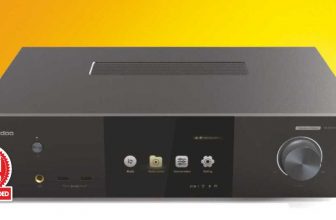
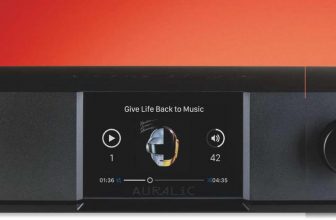
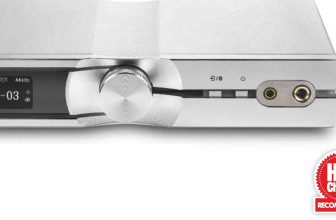
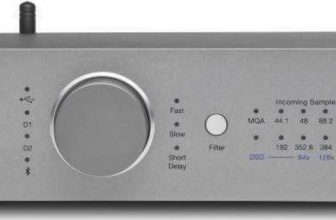
Wrong. It doesn’t need a wifi to work. It is totally autonomous thanks to the hotspot mode. One of the best systems I own, certainly comparable to the highest Burmester streamer, in the pocket, and for a fraction of the price.